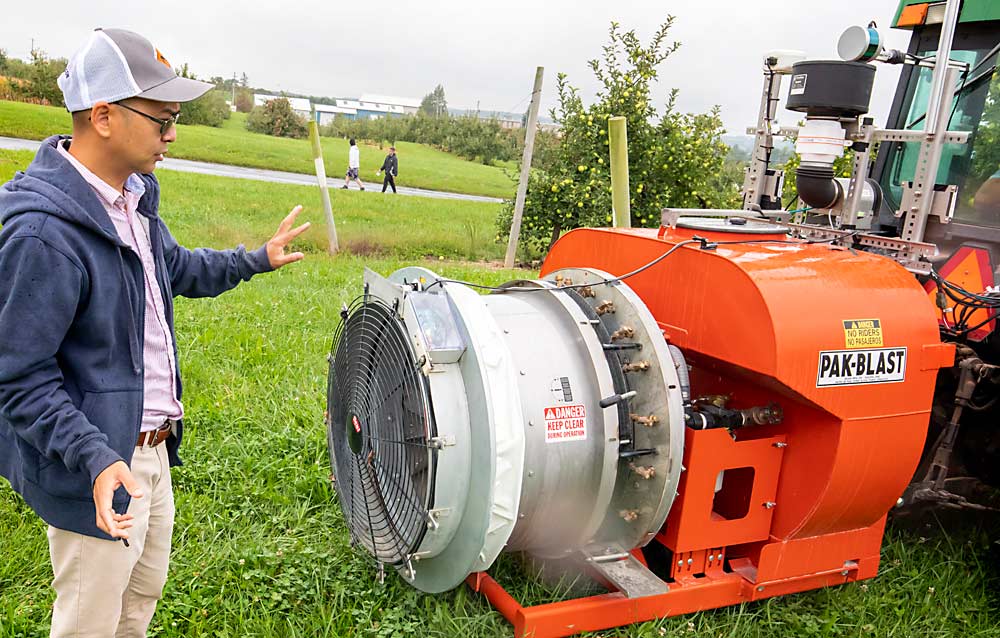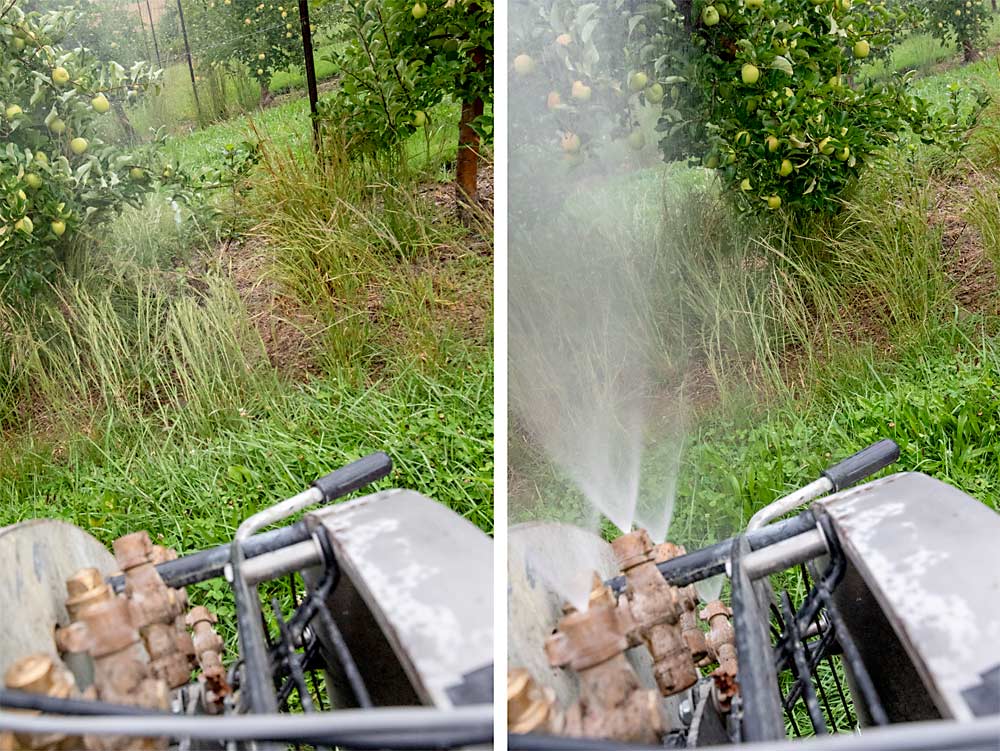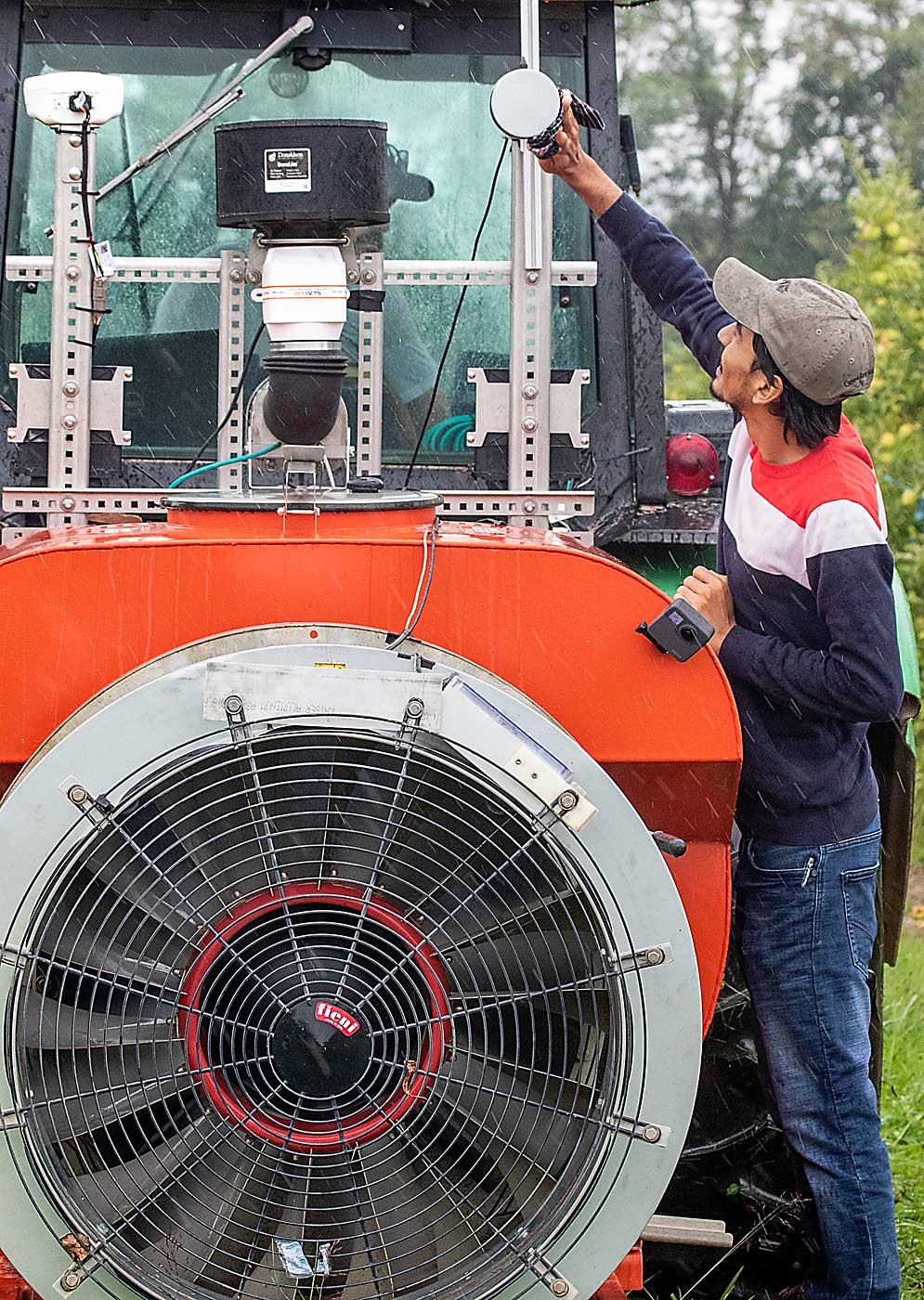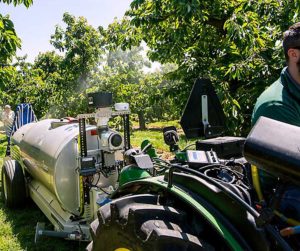Airblast sprayers are a common tool for pesticide application in orchards, but they’re not known for accuracy. Studies have shown that more than 70 percent of the chemical sprayed via airblast misses its intended mark, ending up above, below or between the targeted tree canopies. This has environmental consequences, and it costs growers a lot of money in lost chemical, said Penn State University graduate research assistant Md Sultan Mahmud.
Mahmud is a member of Penn State’s Ag Robotics and Sensing Team, which is studying ways to make chemical applications more precise. One way of doing that is using lidar sensors to measure the density of the tree canopy and then using that information to adjust individual sprayer nozzles.

Since 2019, Mahmud and the robotics team have been developing a lidar-guided tree canopy density measurement system that improves upon existing technologies. He said lidar, which uses light to measure distance, has some advantages over camera-based sensors. Lidar isn’t affected by light, wind or other weather conditions, and it can function day or night.
The Penn State researchers aren’t the only ones using lidar to make spray applications more efficient. They started with a Smart-Apply Intelligent Spray Control System, which is commercially available as an add-on kit from Smart Guided Systems, but they have made several modifications. The Penn State team divides the tree canopy into four different sections, separated by trellis wires. They’ve also developed technology to control the sprayer’s inlet airflow, to reduce drift. Commercial sprayers don’t yet have that capability, Mahmud said.

Penn State assistant professor Long He, Mahmud’s advisor, said the engineering team designed a modified damper to manage the airblast sprayer’s airflow rate and reduce drift. The plan is to use one lidar sensor to control both nozzles and airflow. The team just needs to find a point of optimum performance for both tasks, he said.
Mahmud said the Penn State team’s canopy density measurement system uses 3D lidar, which is more accurate than 2D lidar. They’ve also found a way to reduce off-target spray deposition on uneven orchard terrain, which hasn’t been done before.
They attach the lidar sensor to an ATV or the sprayer itself. The sensor measures the density of each of the four canopy sections and feeds the data to an algorithm that dictates how much spray goes to each section. Denser sections, generally at the bottom of the canopy, get more spray, while sections with fewer leaves get less, Mahmud said.
The Pak-Blast airblast sprayer the team has been working with is set up like other commercial sprayers, except they control the nozzles individually, with a different canopy section targeted by each nozzle. Usually, the lower on the tree, the thicker its canopy, so the nozzles that target the lower sections have higher flow rates, he said.

The team has conducted field trials in GoldRush and Fuji blocks at Penn State’s Fruit Research and Extension Center in Biglerville. According to results, lidar can reduce excessive chemical use by giving the sprayer more accurate data, but more research and refinements are needed, he said.
One of the problems they had to overcome is Pennsylvania’s landscape. Many of the state’s orchards are planted in hilly areas. The variable terrain complicates spraying, especially when trying to sync the readings from a lidar sensor with a moving airblast sprayer. To solve this problem, the team developed a canopy-correction algorithm that considers orchard terrain variability. Trial results have shown that the algorithm can make the necessary corrections for any change of slope, Mahmud said.
—by Matt Milkovich







Leave A Comment